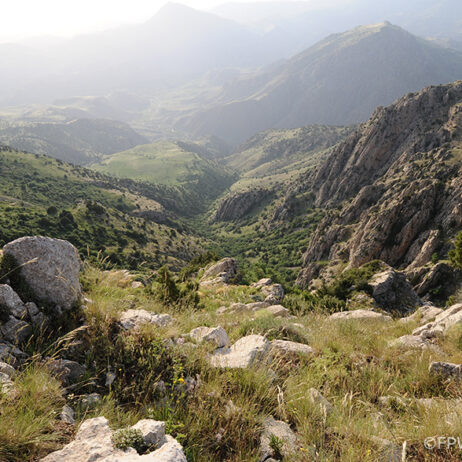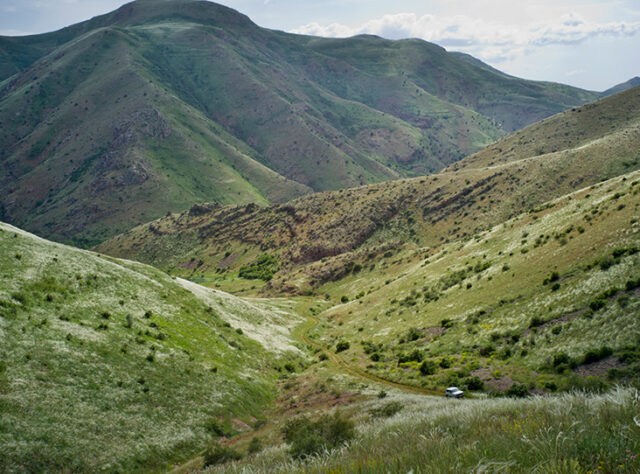
Treeless valley in the Caucasus Wildlife Refuge. Credit: ©David Bebber
With fast-flowing rivers and undulating mountains, Armenia’s Caucasus Wildlife Refuge is ruggedly beautiful. But the landscape here is not all that it once was. Creeping desertification, decades of deforestation, and the climate crisis means areas of land are bereft of the trees they once had. Home to the rare and Endangered Armenian Mouflon and a remaining few of Armenia’s threatened Caucasian Leopard, this region is of vital biological importance.
The Foundation for the Preservation of Wildlife and Cultural Assets (FPWC) needs your help to restore 300 hectares of this degraded habitat in one of our planet’s most extraordinarily biodiverse and threatened regions.
A scarred landscape
The project region, located in the Caucasus Biodiversity Hotspot, was once characterised by ancient Juniper and old growth Oak forests. Today, large tracts of forest have been lost to decades of logging during Armenia’s post-Soviet years, when the country faced an energy crisis.
Though the bulk of deforestation took place in the 1990s, the land has not yet been able to recover on its own. This is due to a series of issues including illegal logging, overgrazing, and wildfires. The latter is worsened by the climate crisis which is disproportionately affecting Armenia.
Today, the absence of remaining forest areas means that the ecosystems in this region are vulnerable. Active reforestation is therefore vital.
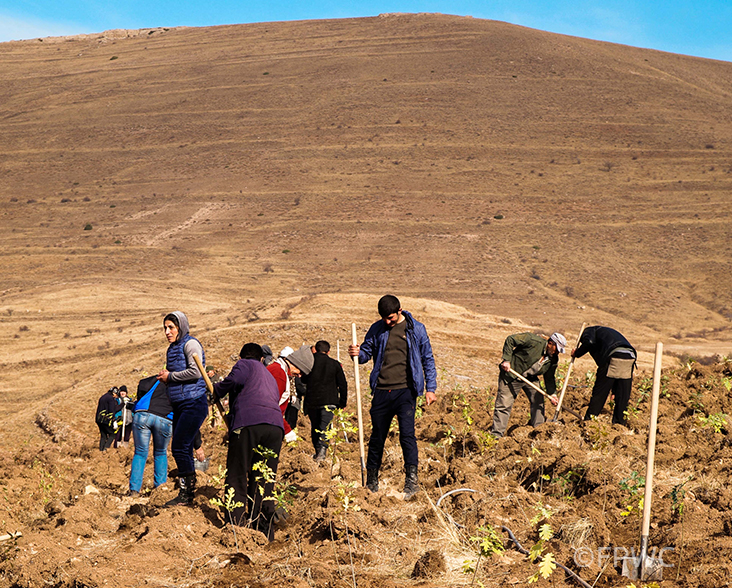
A scarred landscape: Tree planting in these areas of the Caucasus is essential for supporting the ecosystem to recover. Credit: ©FPWC
Funds donated to this appeal will help support:
•Tree planting
• Restoration of 300 hectares of degraded landscape in the Caucasus Biodiversity Hotspot
• Planting of 700,000 trees from over 9 different native species
• Ongoing tending, nurturing, planting, and maintenance of trees
• Improve water security of a region disproportionately affected by the climate crisis
• Provide food sources for wildlife to mitigate conflicts with humans
•Employment opportunities
• Long-term and seasonal employment for tree planting and tree nurseries
• Employment of local people for seed collection and processing
• Ongoing jobs for rangers from local villages
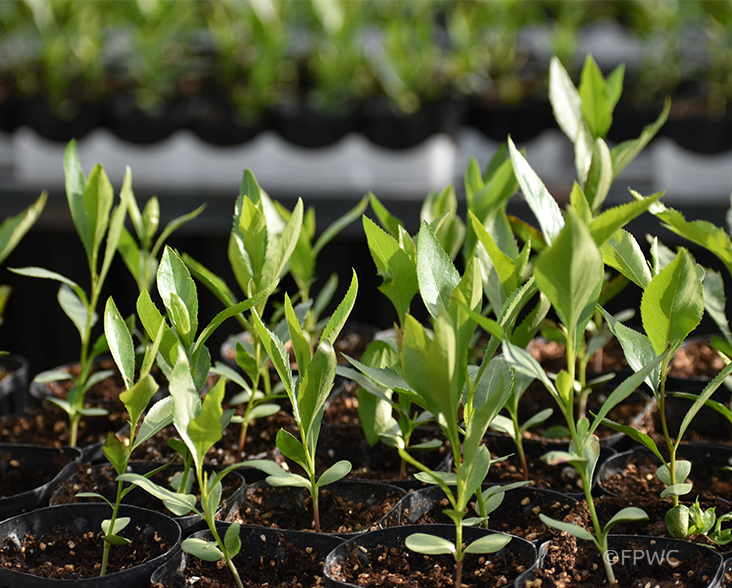
Seedlings in FPWC’s tree nurseries are cared for by staff until ready to plant out. Credit: ©FPWC.
A biological crossroads
Planting trees here will make a tangible difference to a landscape where species from Europe, Asia, and the Middle East meet. Reforestation will take place in areas which form part of the migratory routes of many species, including those recognised as threatened.
Around 44 different mammal species live in the reforestation area, including Syrian Brown Bear and Eurasian Lynx. The region is also significant for its bird species, and includes the Khosrov Forest and Noravank Important Bird Areas (IBAs).
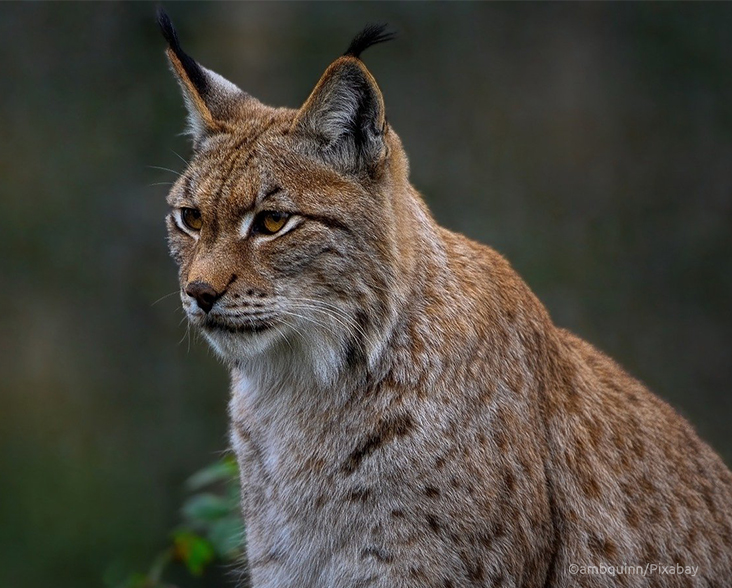
Eurasian Lynx are one of the 44 mammal species living in the CWR. Credit: ©ambquinn/Pixabay
The right tree in the right place
WLT and FPWC firmly believe that successful long-term reforestation projects are possible when the right trees are planted in the right place. FPWC have a long history of tree-planting here, and established Armenia’s first native tree nursery in 2016. As with all of our conservation partners, FPWC holds a deep knowledge of the local landscapes and ecosystems and emphasises the cultural importance of trees in the region.
Each species has been selected due to its role in the broader landscape. For example, Willow-leaved Pear, Caucasus Apple, and Common Barberry offer nutritional fruits for animals, whilst acorns from Caucasian Oak trees are key in the wild boar’s diet.

Caucasus Apple tree blossom. Credit: ©Lukasz Szczurowski/wikimedia (CC – 3.0)
Reducing conflict
Our partner’s approach to planting native fruit trees aims to reduce conflicts between humans and other animals in nearby villages. This is because in recent decades some animals, such as the Syrian Brown Bear, have suffered from a lack of nutrition. This has led to attacks on local people’s crops and animals. By supporting this project, you will help mitigate these issues by offering vital food sources to many species.
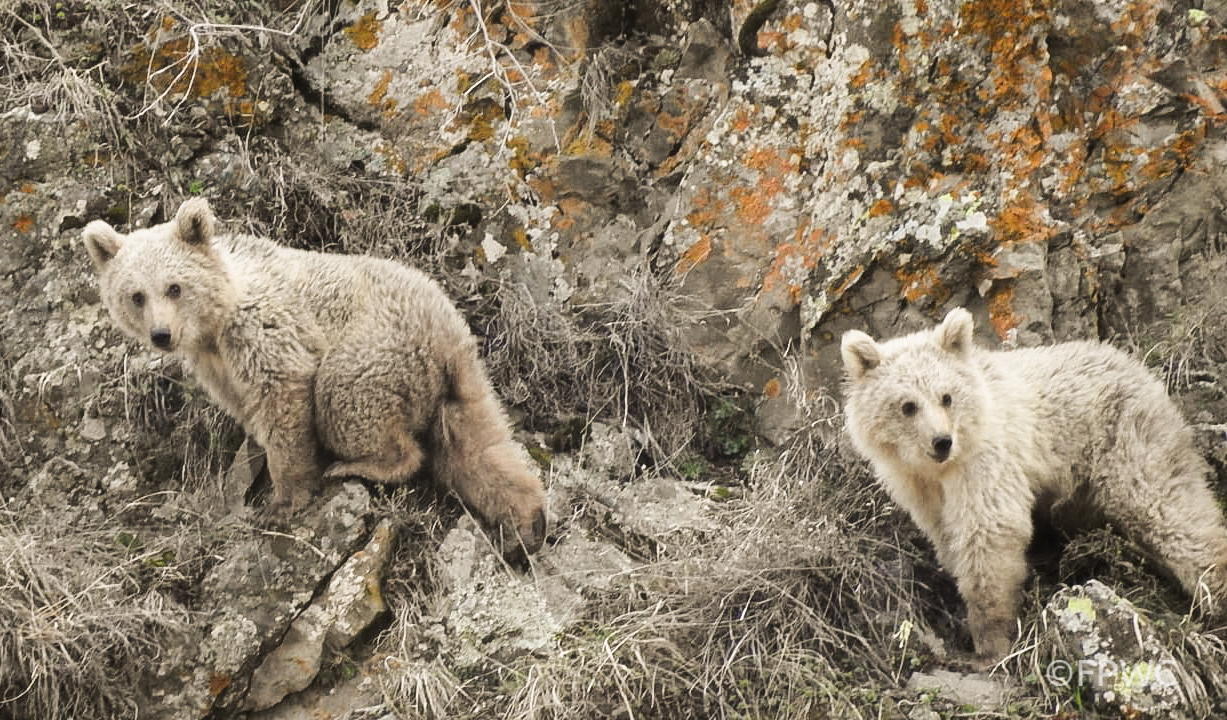
Two Syrian Brown Bear cubs caught on camera trap in CWR in 2021. Credit: ©FPWC
It takes a village
The targeted areas for the reforestation are rural community lands leased by FPWC and integrated into the privately protected area Caucasus Wildlife Refuge. The income generated through this agreement enables a range of village improvements. For FPWC, reforestation efforts are a product of cooperation and the prioritisation of the community’s needs.
Your donations will also help provide environmental jobs in a region affected by the emigration of people looking for work. The project will employ both seasonal workers and year-round positions in the tree nursery. For the tree planting, FPWC also works with local people who collect and process seeds of the local native tree species.

A worker transporting saplings to be planted in Gnishi, Armenia. Credit: ©FPWC
Water is life
The mountains and slopes of the Caucasus Wildlife Refuge are a major watershed for downstream communities. However, they are increasingly affected by periods of drought as the climate crisis worsens. Trees have an important role in the reversal and prevention of the drying out of water sources. As Ruben Khachatryan, Director and Founder of FPWC explains:
“For us, it is essential we do this work because without trees there is no water, and without water there is no life.”
HELP WLT AND FPWC TO RESTORE 300 HECTARES OF DEGRADED HABITAT IN ARMENIA’S CAUCASUS WILDLIFE REFUGE BY DONATING TODAY

